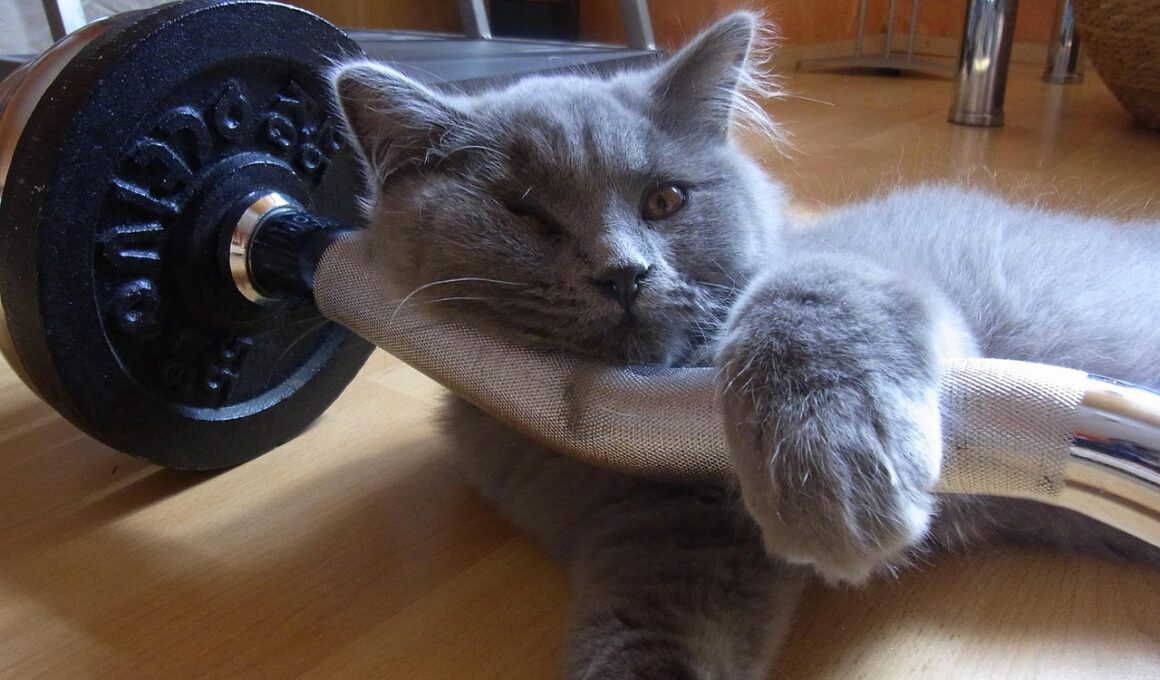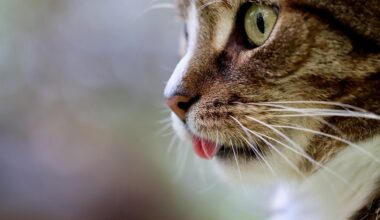How to Use Clicker Training for Unsocial Cats in Rescue Centers
Unsocial cats present unique challenges in rescue centers. These felines may be fearful or anxious around humans and other animals. One effective method to socialize them is clicker training. This positive reinforcement technique can help build trust between the cat and the handler. Initially, the cat may be hesitant to interact, so it’s vital to create a calm environment where they feel safe. Start by introducing the clicker noise without expecting a behavior. This helps the cat associate the sound with something positive. Gradually, incorporate treats after the click sound to reinforce that positive connection. Consistency is key in this training method.
Once the cat becomes familiar with the clicker and treats, progress will occur more smoothly. It’s helpful to conduct training sessions of short duration, as cats have limited attention spans. Understanding the individual preferences of each cat can significantly improve results, as every cat has its own unique personality. Treats should be enticing enough to motivate the cat to engage during training. Keep the environment serene by minimizing noise, which can otherwise lead to anxiety and resistance. Avoid forcing interactions; allow the cat to come to you at their own pace. Building a bond of trust is paramount in this process.
Building a Positive Association
Using clicker training involves making positive associations with desired behaviors. Whenever the cat performs a desired action, immediately press the clicker, followed by a reward. Positive reinforcement encourages the behavior to be repeated. Gradual exposure to different stimuli can help the cat learn to cope with their environment more effectively. Start with simple tasks like coming closer to you or simply making eye contact. Over time, increase the complexity of tasks as the cat becomes more comfortable. Consistent reinforcement leads to a bond where the cat looks forward to training rather than fearing it. This method can shift unsocial behavior positively.
Patience is essential in the journey of training unsocial cats. It may take several sessions for the cat to show progress. Each small victory should be celebrated, reinforcing their growing confidence. Keeping training sessions short, yet frequent will sustain the cat’s attention. Create a routine that includes a specific time each day for training. This ensures the cat becomes accustomed to the clicker training process while establishing a predictable environment. Gradually, as trust builds, the cat may show increased willingness to socialize. Always observe the cat’s body language; a relaxed demeanor indicates comfort and confidence in this nurturing setting.
Advanced Techniques for Socialization
Once positive associations are established, advanced techniques can be introduced. Incorporating toys into the clicker training sessions can significantly increase engagement levels. Opt for interactive toys that require the cat to play, thus energizing them during the training process. This also builds their confidence through successful play. Engaging them in a game with someone nearby further reinforces social trust. Ensure the interaction remains low pressure; the cat should always feel safe and in control. These activities foster a positive association with the human presence while furthering their comfort level. Remember to click and reward whenever they interact positively.
An important aspect of clicker training is the unpredictable element of treats. This variable rewards system can keep unsocial cats intrigued and motivated. Instead of giving treats each time, vary the schedule to keep them guessing and engaged. This unpredictability mimics hunting behavior in wild cats and can enhance their natural instincts. Over time, as the cat becomes more comfortable with you, it’s essential to gradually fade away the clicker and treats while introducing everyday interactions with minimal stress. This transition helps them understand that they can experience comfort and enjoyment in different situations without relying solely on treats and clickers.
Monitoring Progress and Adjustments
Regular monitoring of the cat’s progress is essential for successful clicker training. Keeping a log of their responses to various techniques can help track improvement. Note any specific behaviors that emerge and adjust your training techniques accordingly. If certain methods don’t yield results, being flexible allows you to pivot and explore different strategies. Remember, not all cats respond uniformly, so adapting your approach is necessary for optimal results. Engaging in regular discussions with other shelter staff can also lead to beneficial insights and shared experiences that enhance training approaches for unsocial cats.
Finally, celebrating each milestone is as important as training techniques. Recognizing progress, no matter how small, reinforces positive behavior for both handler and cat. This mutual recognition builds a stronger bond, leading to better outcomes in socialization. With time, effort, and dedication, unsocial cats can transform into loving companions. Every success story reminds us of the power of patience and the rewards of a structured approach. Clicker training not only helps in socializing unsocial cats but also contributes to the overall wellbeing of these felines, enhancing their chances of finding forever homes.


